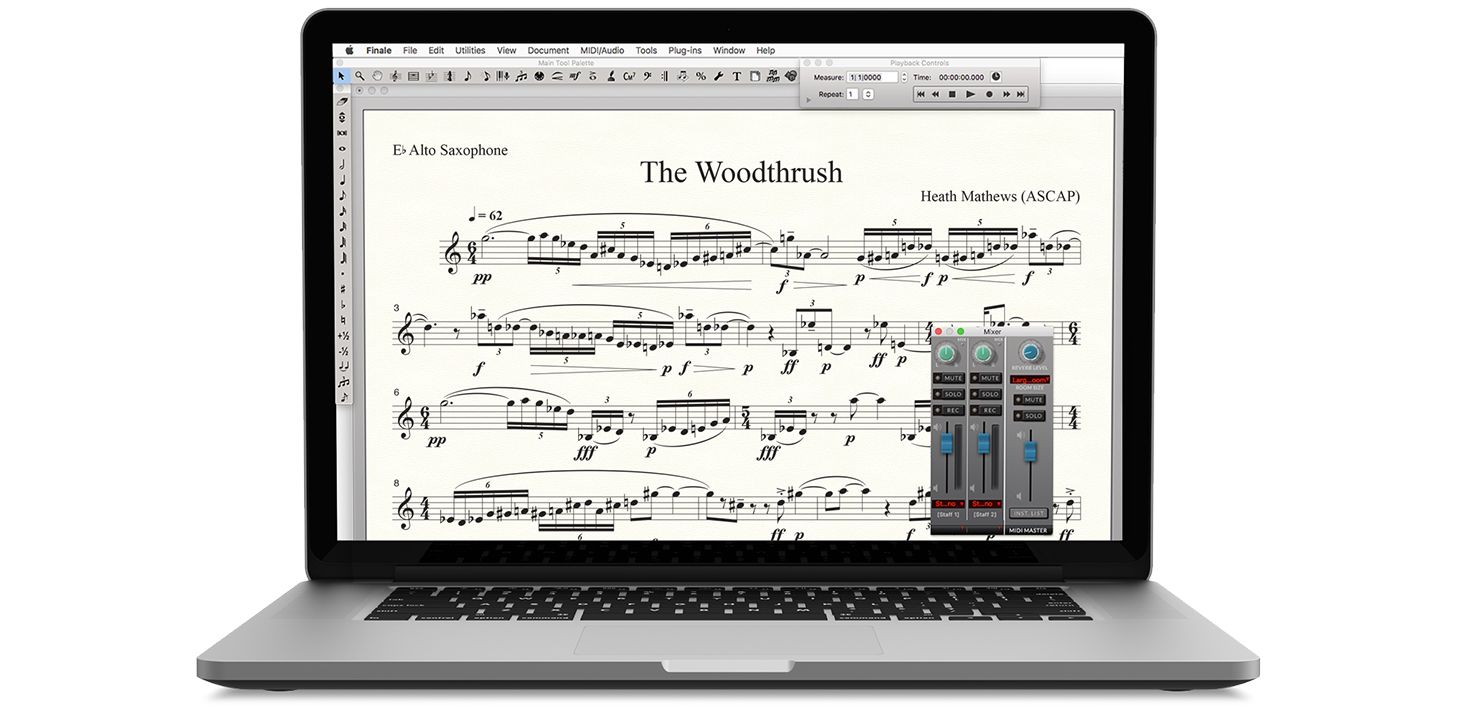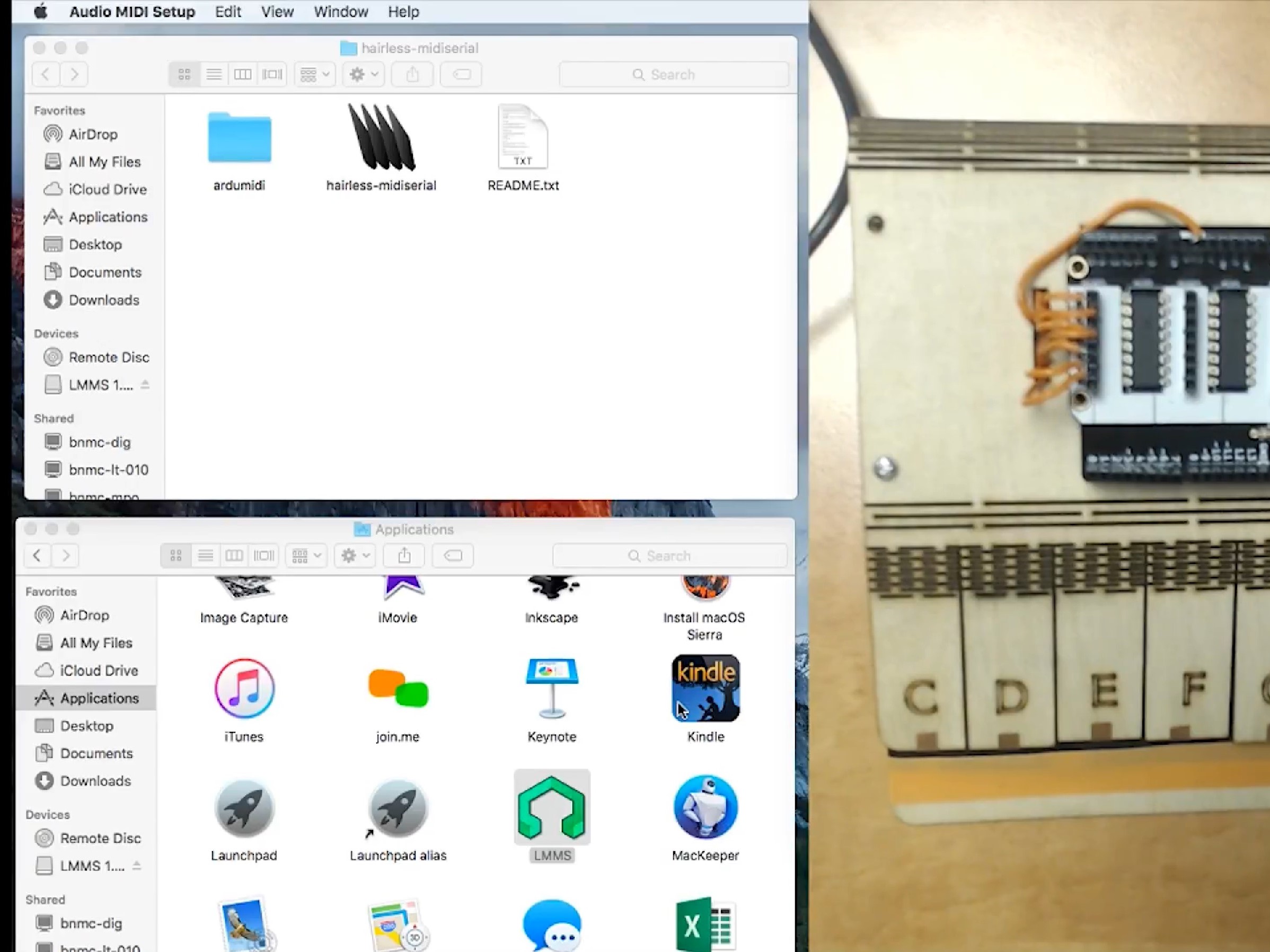Audio MIDI Setup User Guide

Best Free Midi Keyboard Software on Mac (and Apple devices) 1) Garageband Garageband has to be my favorite of all the free music making software available. I’ve written entire songs on the bus using this software on my iPad and have been happier with the sound than some tracks I. Free and safe download. Download the latest version of the top software, games, programs and apps in 2020.
If you use MIDI devices or a MIDI interface connected to your Mac, you can use Audio MIDI Setup to describe the configuration of your MIDI devices. There’s a default configuration already created, but you can set up your own.
You can use this configuration information for apps that work with MIDI, such as sequencers, to control your MIDI devices.
Note: Make sure your MIDI devices are connected to your Mac. If you’re using an interface device, connect any other MIDI devices you’re using to the interface. Also check that any software provided by the manufacturer of the MIDI devices has been installed. For more information, see the documentation that came with your devices.
Midi Editing Software For Mac
View a MIDI configuration
In the Audio MIDI Setup app on your Mac, choose Window > Show MIDI Studio.
In the MIDI Studio window, click the Choose MIDI Configuration pop-up menu (it may show Default), then choose the configuration you want to view.
In the toolbar, click the following buttons to change how the configuration is shown:
Hierarchical View : Devices in the configuration are shown as icons. If a device isn’t connected, its icon is dimmed. To view information about a device, such as channel properties and ports, and to add or remove ports, double-click the device’s icon.
List View : Devices in the configuration are shown in a list, organized by type (such as Interface or External Device). If a device isn’t connected, it’s dimmed. To filter which devices are shown, click the Show pop-up menu, then choose an option (such as Online or Connected). To view information about a device, double-click the device. To view its ports, or to connect or disconnect devices, click the device’s disclosure triangle.
Create a MIDI configuration
In the Audio MIDI Setup app on your Mac, choose Window > Show MIDI Studio.
In the MIDI Studio window, click the Choose MIDI Configuration pop-up menu (it may show Default), then choose New Configuration.
Enter a name for the new configuration, then click OK.
To add a new external MIDI device, click the Add button in the MIDI Studio toolbar.
To set properties and add or remove ports for the MIDI device, double-click the device, or select it, then click the Device Info button in the toolbar.
In the Properties window, do any of the following:
Describe the device: Enter a name for the MIDI device; the name appears in apps you use with the device. If you know the manufacturer and model, you can enter those.
Change the device icon: Click the MIDI device’s icon to open the Icon Browser, select a different icon to represent the device, then click the new icon to close the Icon Browser.
Change the device color: Click the color well, select a different color to use for the MIDI device, then close the Colors window.
Set the device channels and other properties: Click Properties, then click the channels to use for transmitting and receiving audio. To deselect a channel, click it again. Also select whether to use the MIDI Beat Clock, the MIDI Time Code, or both, then select other features.
Add or remove ports: Click Ports, click the Add button below the list of ports, then specify the MIDI In and MIDI Out connectors for the port. To delete a port, select it in the list, then click the Remove button .
Select MIDI-CI profiles for interface devices: If an interface device supports MIDI-CI, click MIDI-CI to see the profiles available on each channel. To turn a profile on or off, select or deselect its checkbox.
Click Apply.
Repeat steps 4 through 7 for each MIDI device you want to include in the configuration.
In the MIDI Studio window, specify the connection between MIDI devices:
In Hierarchical View , drag the In or Out connectors at the top of a device icon to the corresponding connector on another device icon.
In List View , click a device’s disclosure triangle, click the Port disclosure triangle, click the Add Connection icon, then use the pop-up menus to specify the connections.
If you have a MIDI interface connected to the USB port on your Mac, it should appear in the MIDI Studio window. If it doesn’t, see If a connected MIDI device isn’t shown.
You can’t specify a “MIDI thru” connection between two MIDI devices. To indicate a MIDI thru connection, connect the two MIDI devices to the same port of the MIDI interface device.
Edit a MIDI configuration
In the Audio MIDI Setup app on your Mac, choose Window > Show MIDI Studio.
In the MIDI Studio window, click the Choose MIDI Configuration pop-up menu (it may show Default), then choose Edit Configurations.
Select a configuration, then click Duplicate, Rename, or Delete.
When you’re finished making changes, click Done.
The malletSTATION model EM1 is a full sized 3.0 octave adjustable range electronic mallet controller designed for all players in any genre, from the beginning student through the gigging professional.
The adjustable low note range function allows you to set the fundamental diatonic note of the instrument to what you need—low D xylophone? No problem! The malletSTATION is powered exclusively by Mac, PC, iPad, iPhone, and Android devices through USB Bus Power, allowing performance almost anywhere with minimal set-up and equipment.
Designed in collaboration with Keith McMillen Instruments, malletSTATION’s tech-forward design features KMI’s Smart Fabric Sensor technology allowing the silicone bar material to have an extremely sensitive, natural response, including mallet dampening and aftertouch control, and all can be easily tailored to your individual playing style.
The EM1 features a master control section, with 3 programmable faders, 4 programmable buttons, and the fixed function low note and octave shift buttons. In addition, three assignable pedal inputs allow for flexibility in performance such as sustain, expression, or any MIDI parameter of your choice. These controls are fully programmable through a software editor so changing your configuration is as easy as clicking a mouse.
The EM1 malletSTATION is the most affordable mallet percussion controller on the market. The ultra-thin, lightweight chassis allows for easy portability, and the flexible mounting options provide many different ways of using your instrument. This is the only controller that will grow with you throughout your playing career—from music apps on your phone or tablet, to professional digital audio workstations and sound libraries—your sounds, and even the instruments you play, are only limited by the software you run.
43 1.75” (4.4 cm) x 5” (12.7 cm) soft silicone keys
3 MIDI assignable faders
4 MIDI assignable buttons
3 MIDI assignable ¼”pedal inputs
Bottom Note Range Shift up/down buttons
Octave up/down buttons
Natural feeling soft silicone keys, all-weather playing surface
MIDI Assignable buttons and faders for customized control and functions
3 MIDI assignable pedal inputs for expression and sustain
Steel Chassis Design for durability and stability
Optional MIDI Expander to use external MIDI Hardware (sold separately)
Flexible mounting on desktop, X-stand, or module mounts (sold separately)
Mounting plates, stands, cases, covers, and other peripherals available separately
iOS compatibility requires Apple Lightning to USB 3 Camera Adapter (sold separately)
CONNECTIONS
Full-size USB 2.0 Type-B jack
Mini-USB for connection to KMI MIDI Expander (sold separately)
3 ¼” Pedal inputs (1 expression, two switch)
“Gap Cap” Accidental note covers
3m USB Cable
POWER SOURCE
USB Bus Power
DIMENSIONS AND WEIGHT
1.6” (4.1 cm) H x 12.6” (32 cm) W x 49” (124.5 cm) L
22.5 lbs (10.20 kg)
MIDI DATA
Intuitive Online-downloadable Software User Interface for easy MIDI and parameter customization
Class-Compliant MIDI over USB
MIDI over 5-pin DIN (via KMI MIDI Expander, available separately)
Hardware Computer Requirements-
For Mac –
Mac OS 10.6 (or greater)
Intel Core 2 Duo (or greater)
USB 2.0 (or greater) port
For Windows –
Windows 7, 8, & 10
USB 2.0 (or greater) port
Editor Software Computer Requirements-
For Mac OS –
Mac OS 10.10 or later
Intel Core 2 Duo (or greater)
USB 2.0 (or greater) port
100 MB free hard disk space
For Windows –
Windows 7, 8, & 10
64 bit
2.5 GHz processor (or greater)
4 GB RAM (or greater)
USB 2.0 (or greater) port
100 MB free hard disk space
Web Editor
Chrome, Opera or other Web MIDI capable web browser. To check compatibility with WebMIDI, go here: http://caniuse.com/#feat=midi

Manual (updated 7/16/18)
Pearl EM1 malletSTATION Manual 1.0.0
Quick Start Guide (updated 7/16/18)
Pearl EM1 malletSTATION Quick Start Guide
malletSTATION Editor for Mac OS X
malletSTATION Editor (OS X) | Alt. Link
malletSTATION Editor for Mac OS Catalina
malletSTATION Editor (OS X Catalina) | Alt. Link
malletSTATION Editor for Windows
malletSTATION Editor (Windows) | Alt. Link
Web-based malletSTATION Editor (must use in Google Chrome, Opera, or Brave)
malletSTATION Editor (Web MIDI)
Presonus Studio One 4 Artist (included with purchase)
Pearl has partnered with Presonus to offer original owners of the Pearl EM1 malletSTATION a custom version of Studio One 4 Artist, as well as a Pearl malletSTATION specific Sound Set for use in Studio One. This Digital Audio Workstation (DAW) is incredibly powerful, allowing professionals and students alike the ability to record, edit, and perform with their malletSTATION right out of the box using their Mac or PC.
If you are the original owner, registering your malletSTATION on this site will get you the serial number needed to install Studio One from the My Presonus website. Click here for Studio One and malletSTATION Sound Set Installation Information

Pearl’s custom version of Studio One 4 Artist available with the original purchase is not available to the Used Product Owner. The software must be transferred independently from the original owner to the new owner. If the Used Product Owner does not know the original owner, Pearl and PreSonus are unable to provide that information to the new owner. PreSonus products are compatible with a wide variety of audio software for Mac and PC. The new owner can purchase a copy of Studio One from their website or can use one of many other software programs available for professional recording.
Apple Mainstage (not included with purchase)
Apple’s Mainstage (Mac Only) is a industry standard audio application for performing live. This program allows you the ability to assign any control to any fader, button, or pedal with ease. This software is commonly used in the marching arts, broadway, and large musical tours.
You can find Mainstage on the Mac App Store at the following link – https://www.apple.com/mainstage/
IK Multimedia Sampletank CS (not included with purchase)
IK Multimedia’s Sampletank is a very powerful synth/sampling app for iOS devices. There are various melodic percussion instruments available through the Sampletank Store in the app.
You can find Sampletank for iOS on the App Store at the following link – http://www.ikmultimedia.com/products/sampletankios/
Music Midi Software For Macintosh
Apple Garageband for iOS (not included with purchase)
Apple’s Garageband for iOS is a great way to get up and running quickly with your malletSTATION.
You can find Garageband for iOS on the App Store at the following link – https://www.apple.com/ios/garageband/
Mainstage Template
A Mainstage Template containing a variety of sounds already laid out for malletSTATION is available here – Pearl malletSTATION Mainstage Template 1.0
Best Midi Software For Mac
Presonus Studio One 4 Artist
A Template for Studio One is included in the application. Open a new song, and click “Pearl malletSTATION Template” to get started.
